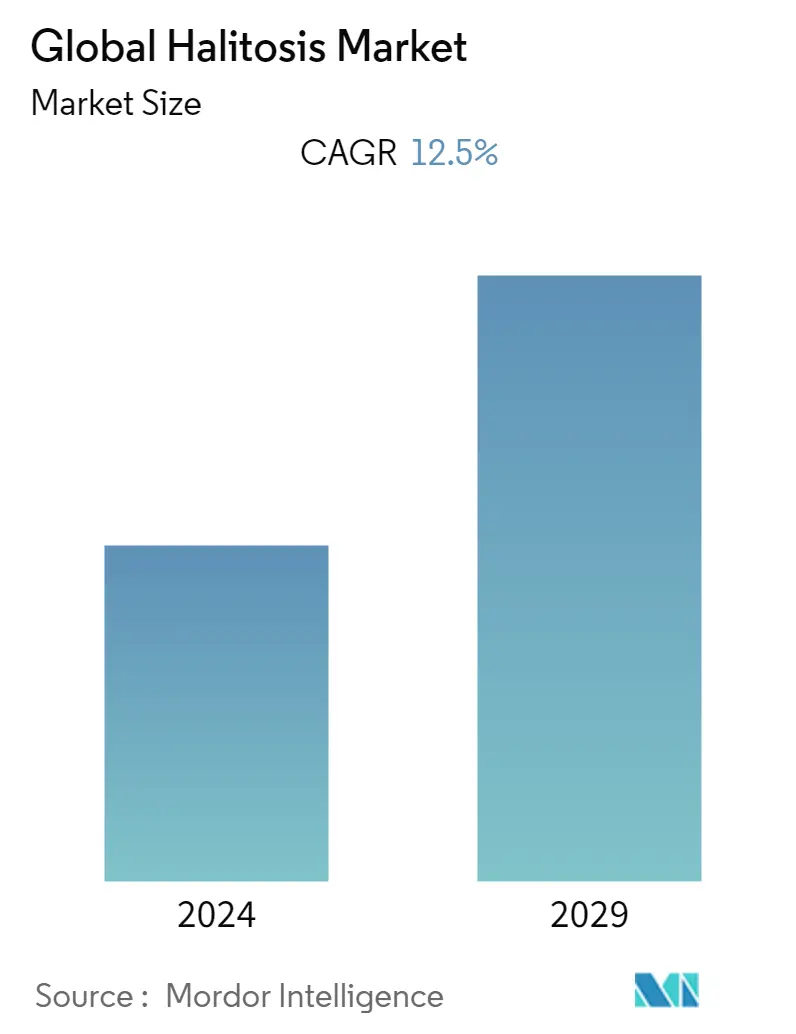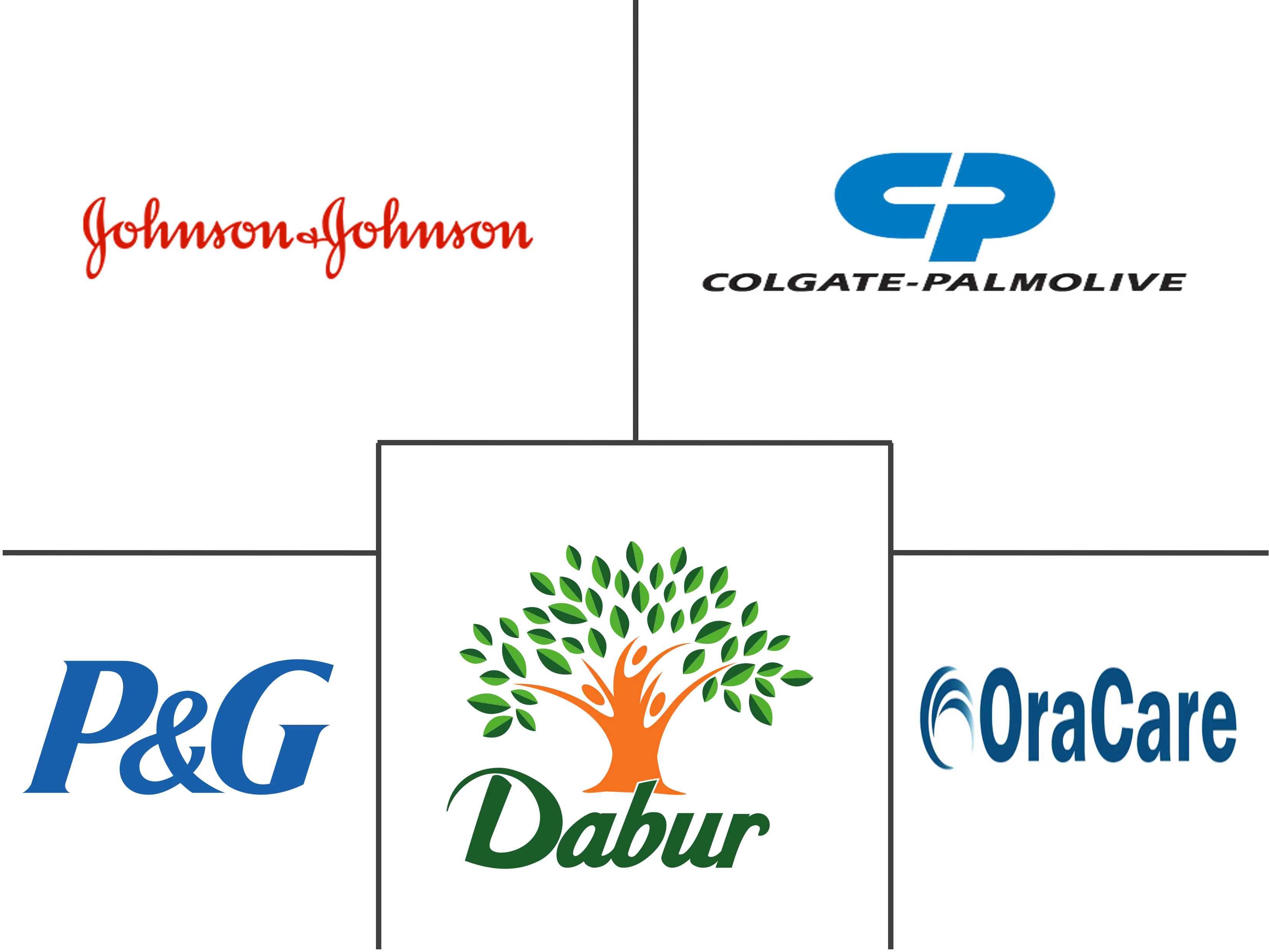Market Size of Global Halitosis Industry

| Study Period | 2019 - 2029 |
| Base Year For Estimation | 2023 |
| Forecast Data Period | 2024 - 2029 |
| CAGR | 12.50 % |
| Fastest Growing Market | Asia-Pacific |
| Largest Market | North America |
Major Players
*Disclaimer: Major Players sorted in no particular order |
Need a report that reflects how COVID-19 has impacted this market and its growth?
Halitosis Market Analysis
The halitosis market is projected to register a CAGR of 12.5% over the forecast period (2022 - 2027).
As with other circulating pandemics, halitosis has been greatly challenged by the outbreak of the coronavirus disease (COVID-19), and a few confirmed cases have been reported to be present with halitosis while being actively infected. For instance, the article titled "Oral manifestations in mild-to-moderate cases of COVID-19 viral infection in the adult population" published in the National Library of Medicine in March 2021 stated that halitosis was prevalent in 10.5% of the patients that were included in the survey. A total of 573 COVID-19 individuals were included in the survey, which intended to highlight the oral manifestations that could be seen in mild-to-moderate cases of the disease. The study found that oral symptoms are related to mild-to-moderate cases of COVID-19 infection, and individuals with infectious diseases should have regular dental examinations. Such studies have highlighted the diagnosis and treatment of halitosis amid the pandemic phase, which is in turn expected to boost the market's growth over the coming years.
Furthermore, the factors propelling the growth of the market are the rising prevalence of periodontal diseases; increasing consumption of alcohol and tobacco; medical conditions such as tonsils; and inflammation of the nose, throat, or sinuses. As per the study titled "The Prevalence and Determinant Factors of Oral Halitosis in Northwest Ethiopia: A Cross-Sectional Study" published by Dovepress in 2021, halitosis is reported to be the third most common reason for visiting a dentist, trailing only dental caries and periodontal disease. The prevalence of halitosis among adults worldwide ranged from 22% to 50%. Moreover, as per another article titled "Say Ahhh: Experience and Views on Halitosis Management in the General Public in Victoria, Australia" published in August 2021 by the International Dental Journal, up to 90% of cases of halitosis are caused by intraoral sources, such as tongue coating or periodontitis, while 8% to 10% are due to extraoral factors. When a patient is devoid of intraoral causes of halitosis, it may be a sign of systemic, metabolic, or hereditary illnesses. Thus, the increasing prevalence of halitosis globally is a major factor that is expected to drive the diagnosis and treatment of halitosis in the near future.
Furthermore, persistent bad breath or a bad taste in the mouth may be a warning sign of gum (periodontal) disease, which is closely associated with halitosis. As per an article titled "Periodontal Disease Prevalence, Extent, and Risk Associations in Untreated Individuals" published in January 2022 by the American Academy of Periodontology (AAP) and the European Federation of Periodontology (EFP), the prevalence of total periodontitis and stage III/IV periodontitis was 85.4% and 48.5%, respectively. The prevalence of CDC/AAP moderate-severe and severe periodontitis was 78.4% and 31.1%, respectively. Therefore, the increasing prevalence of periodontal diseases is expected to drive market growth over the analysis period.
However, a lack of awareness about halitosis and its treatment and the availability of alternative treatments are expected to hamper the market's growth during the forecast period.
